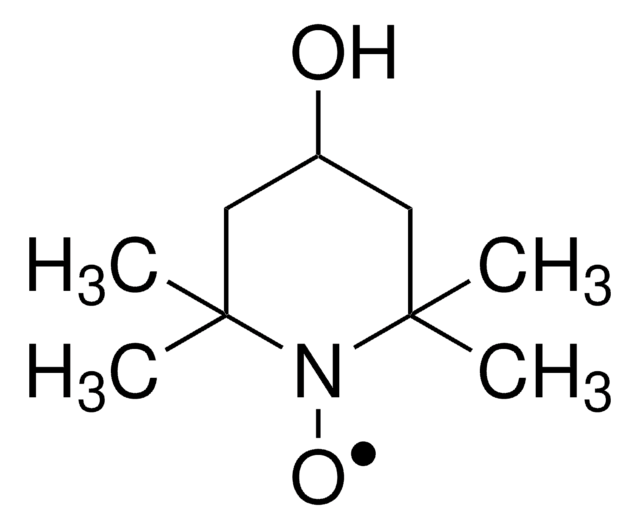T7024
N,N,N′,N′-tetrametil-etilendiammina
BioReagent, for molecular biology, ≥99% (GC)
Sinonimo/i:
1,2-bis(dimetilamino)etano, TEMED, TMEDA
About This Item
Prodotti consigliati
Grado
for molecular biology
Nome Commerciale
BioReagent
Saggio
≥99% (GC)
Limite di esplosione
9.08 %
tecniche
GC/GC: suitable
Indice di rifrazione
n20/D 1.4179 (lit.)
P. ebollizione
120-122 °C (lit.)
Punto di fusione
−55 °C (lit.)
Densità
0.775 g/mL at 20 °C (lit.)
Attività estranea
DNase, RNase, protease, none detected
Stringa SMILE
CN(C)CCN(C)C
InChI
1S/C6H16N2/c1-7(2)5-6-8(3)4/h5-6H2,1-4H3
KWYHDKDOAIKMQN-UHFFFAOYSA-N
Cerchi prodotti simili? Visita Guida al confronto tra prodotti
Applicazioni
TEMED is a tertiary amine that is used to catalyze the formation of free radicals from ammonium persulfate or riboflavin. TEMED-generated free radicals cause the compounds acrylamide and bis-acrylamide to polymerize and form the gel matrix polyacrylamide. Because TEMED is functional only in its free base form, low pH conditions will inhibit polymerization.,,
The potential contribution of TEMED to elevated background in silver stained SDS PAGE has been studied. TEMED has been used in the coating of soft polymers, such as polyacrylamide, in capillaries for investigation by atomic force microscopy. Microchips containing oligonucleotides and proteins immobilized within gel pads have been prepared using TEMED.
The capillary isoelectric focusing of proteins with an isoelectric point (pI) > 12 has been investigated through the use of TEMED. TEMED has been used in the HPLC of small organic molecules.
Quantità
Avvertenze
Danger
Indicazioni di pericolo
Classi di pericolo
Acute Tox. 3 Inhalation - Acute Tox. 4 Oral - Eye Dam. 1 - Flam. Liq. 2 - Skin Corr. 1B
Codice della classe di stoccaggio
3 - Flammable liquids
Classe di pericolosità dell'acqua (WGK)
WGK 1
Punto d’infiammabilità (°F)
61.7 °F - closed cup
Punto d’infiammabilità (°C)
16.5 °C - closed cup
Dispositivi di protezione individuale
Faceshields, Gloves, Goggles, type ABEK (EN14387) respirator filter
Scegli una delle versioni più recenti:
Possiedi già questo prodotto?
I documenti relativi ai prodotti acquistati recentemente sono disponibili nell’Archivio dei documenti.
I clienti hanno visto anche
Il team dei nostri ricercatori vanta grande esperienza in tutte le aree della ricerca quali Life Science, scienza dei materiali, sintesi chimica, cromatografia, discipline analitiche, ecc..
Contatta l'Assistenza Tecnica.









